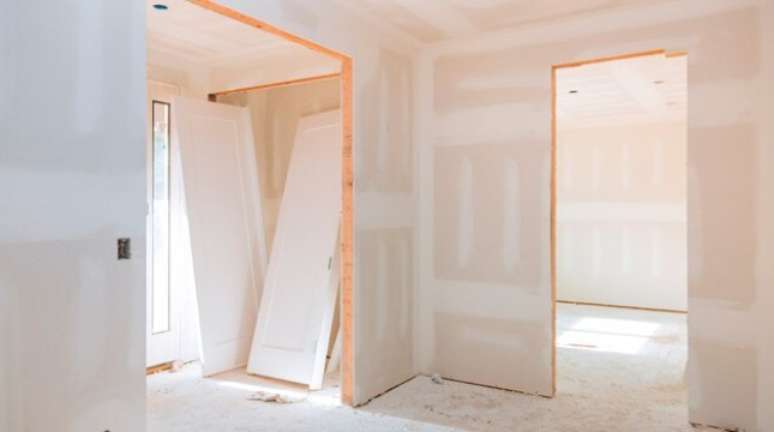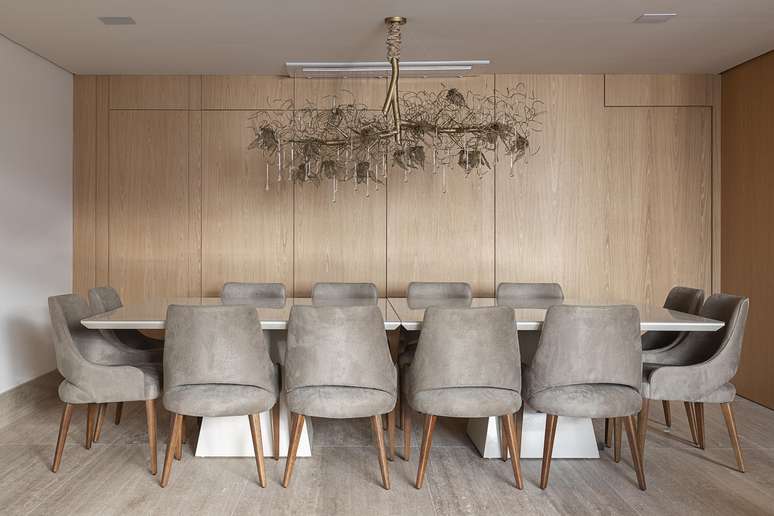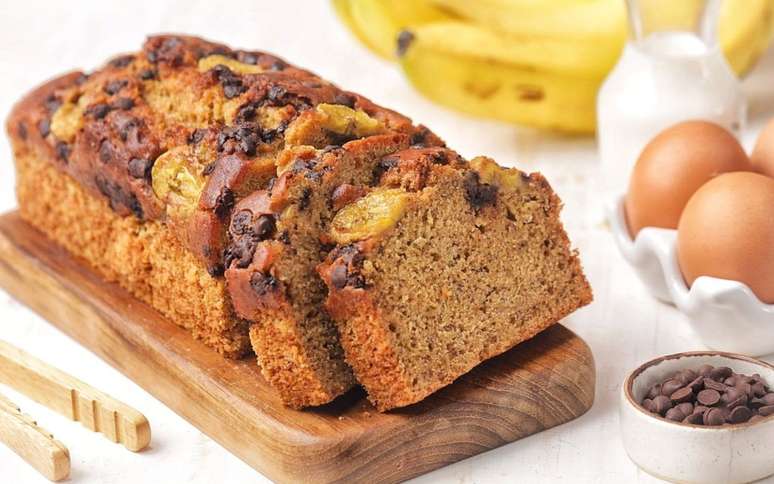Plasterboard is a practical and efficient dry construction technique. Discover the advantages:
With the growing trend of studio apartments AND small houses, especially in large cities, the challenge for many architects is to optimize the space in these environments. According to data from Embraesp (Brazilian Society of Heritage Studies), in Sao Paulo 76% of properties launched are up to 45 m². In this type of project every meter must be taken into consideration to offer maximum comfort to the resident.
One way to save space for this housing model is plasterboard walls, which are at least 5 centimeters thinner compared to traditional masonry walls.
What is drywall
Drywall is a dry construction solution composed of metal profiles and plasterboard stuffed of some materials for acoustic treatment, such as glass wool. Despite its thin thickness, the material, famous for its characteristic “knock knock” noise, proves to be more efficient than masonry in terms of acoustic and thermal insulation.
According to Alice Cabral, Placo Product Manager, in addition to helping to save space, construction with plasterboard is a light and sustainable construction system:
- reduces water consumption to a minimum
- reduces material waste
- Cardboard waste is still recyclable.
Advantages of plasterboard in small apartments

Lightness
The drywall system can be up to 6 times lighter than brickworkoffering a significant reduction in the load on the structure and transport costs.
Generates less waste
Dry construction generates, on average, only 5% waste, i.e. 15% less than conventional masonry. The construction method is also lighter and more practical to transport, generating petrol savings and less pollution of the environment during transport, resulting in savings in purchase and disposal.
Sustainability
In addition to ease of transportation and reduced pollution, they require plasterboard walls very little water for its construction. While a building made with bricks and mortar uses 8 liters of water per square meter, a construction with plasterboard uses only 1 liter of water per square meter.
Even plasterboard walls, since they are “padded” with a thermal insulating material, tend to save energy that would be spent on air conditioning the room, since the glass wool helps to keep the environment at a pleasant temperature.
Faster construction
Thanks to the lightness and practicality of the material, two installers are able to produce around 30 m2 of plasterboard in a single day, and within two hours the wall is ready to receive the finish.
Quick and easy repairs
Perform repairs when working with plasterboard it is more simple, fast and clean. If you need to access an electrical system or a pipe, simply cut the plate where you want it, without breaking or wasting it, as the same cut piece of plate can be reused to close the wall.
Source: Terra
Ben Stock is a lifestyle journalist and author at Gossipify. He writes about topics such as health, wellness, travel, food and home decor. He provides practical advice and inspiration to improve well-being, keeps readers up to date with latest lifestyle news and trends, known for his engaging writing style, in-depth analysis and unique perspectives.





![It All Begins Here: What’s in store for Thursday 16 October 2025 Episode 1286 [SPOILERS] It All Begins Here: What’s in store for Thursday 16 October 2025 Episode 1286 [SPOILERS]](https://fr.web.img3.acsta.net/img/7d/99/7d99acbb3327f48a72b40f684092775e.jpg)

-qe1jxfyoo3eh.JPG)

